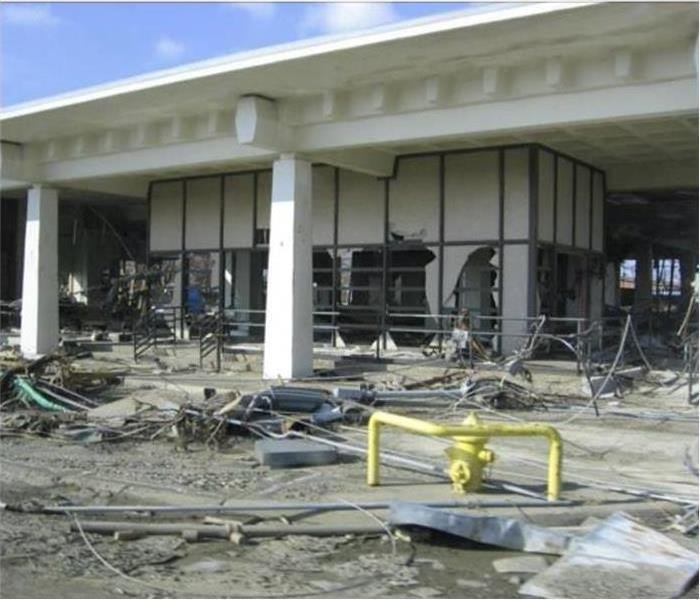Key Distinctions Between Storm Damage and Flood Damage
7/19/2024 (Permalink)
Storm Damage vs Flood Damage
At first glance, it would seem that flood damage and damage from a storm would be pretty similar. In reality, though, the two have critical differences. A flood usually occurs from the ground up, often the result of rising waters from streams and rivers and typically entering a building in Pflugerville, TX, by way of a the foundation. On the other hand, water from storms more often than not comes down from above through the roof system. Storm damage also includes harm to the building caused by powerful winds, large hail or heavy snows. Either type of damage can be devastating to a company, but the restoration process for each includes important differences.
Insurance
Flood damage is not typically covered by a company's general insurance policy, while damage from a storm is usually covered. Therefore, a company that is located in an area at risk for flooding should carry flood insurance. The most common and affordable flood insurance is available through the National Flood Insurance Program and has the following features:
- Covers damages caused by a flood
- Is administered by FEMA
- Is voluntary in most circumstances
- Is purchased through licensed insurance agents
- Typically has a 30-day waiting period
Damage from a storm is typically covered under a company's general policy. It usually covers damage caused by the storm and expenses for restoration.
Cleanup
A company faced with any type of water damage should consult with a reputable storm mitigation franchise for assistance with restoration. In the case of flood damage, though, the cleanup is complicated with the presence of contaminated water. This dirty water coming into the building could contain chemicals, pathogens, microbes and other potentially dangerous substances. This requires cleanup and restoration by an experienced team of trained technicians that wear PPE and take other safety precautions. The water from a storm coming in through the roof is seldom considered contaminated and can be addressed through a standard restoration process.




 24/7 Emergency Service
24/7 Emergency Service
